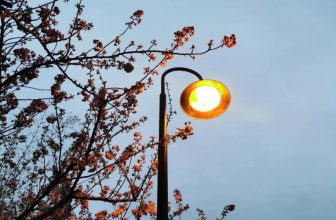In recent years, through the evolution of technology, LED has been significantly improved in terms of luminosity output, luminous efficiency and service life, so it is more and more attractive for various applications that used other light sources in the past, especially street lamps that can currently be used Applications that are addressed using LED technology.
LED-based street lights first appeared on the streets a few years ago, although they were mainly used to demonstrate design concepts or test lights on campuses. Yellow phosphor was at the time one of the only available and stable phosphors for use with blue chips to produce white light output. Most of these Aluminum Die Casting 50W To 150W IP66 LED Street Light are designed with cool white LEDs with a color temperature of around 6000K or higher. Unfortunately, most people don’t like the cold white light from these street lights, and some even complain that the cold white light will bring a cold feeling. In addition, some people feel that the colors appear pale under the illumination of cool white light sources.
LED and phosphor manufacturers heard the feedback on the first-generation prototype setups and began developing new neutral white high-brightness output LEDs for street lighting applications using a more natural, 4000K color temperature. For example, Avago’s ASMT-JN32-NVV01 can deliver 100lm at 350mA or 160lm at 700mA with a minimum typical 4000K correlated color temperature (CCT) photometric output.
The LM-80 LED life test recommendation standard requires that the LED light source must have a minimum life of 35,000 hours, and the newer high-power LEDs can reach at least 60,000 hours at high junction temperatures (L70, B10). Judging from the average use time of 12 hours a day (about 4400 hours a year), 160lm/w IP66 LED Street Light For Urban Road using the latest LED technology can easily reach a lifespan of 10 years without replacing the light source.
From the perspective of product packaging, modern LED packaging has a low thermal resistance of 6~9°C/W (K/W). This helps transfer as much heat as possible from the junction to the heat sink. In addition, the photometric output at different junction temperatures is also very stable, with less than 20% variation from 25°C/ to 110°C/junction temperature.
Another advantage of using neutral white high-power LED is that it uses advanced phosphor technology, which can bring better spectral distribution. Compared with cool white LEDs, the light emitted by neutral white LEDs has more yellow and red wavelengths (see Figure 2). Such a spectral distribution helps to distinguish different liquids on the asphalt surface. Cool white LEDs basically make oil, water, or cherry juice on the street very difficult to tell – if you’re driving, being able to spot oil stains on the ground is helpful! On the other hand, a neutral white light source can make brown oil stains or red cherry juice very easy to spot.
In addition, the skin tone under the neutral white LED light source is more natural. Colorful flowerbeds and green turf in homes next to the street will also look more welcoming and warm. Community security and personal safety will also be enhanced by brighter street lights. Global statistics indicate that burglaries and car thefts are significantly reduced with better street lighting.
The use of LEDs is very simple and widely used, which can bring many new and attractive 35W 50W American Style Small LED Street Lamp designs, such as ultra-thin designs and long or square lamp housings. Designers and engineers must consider all design aspects (including temperature, optics, and electrical, etc.) to complete successful commercial street lighting project engineering.






